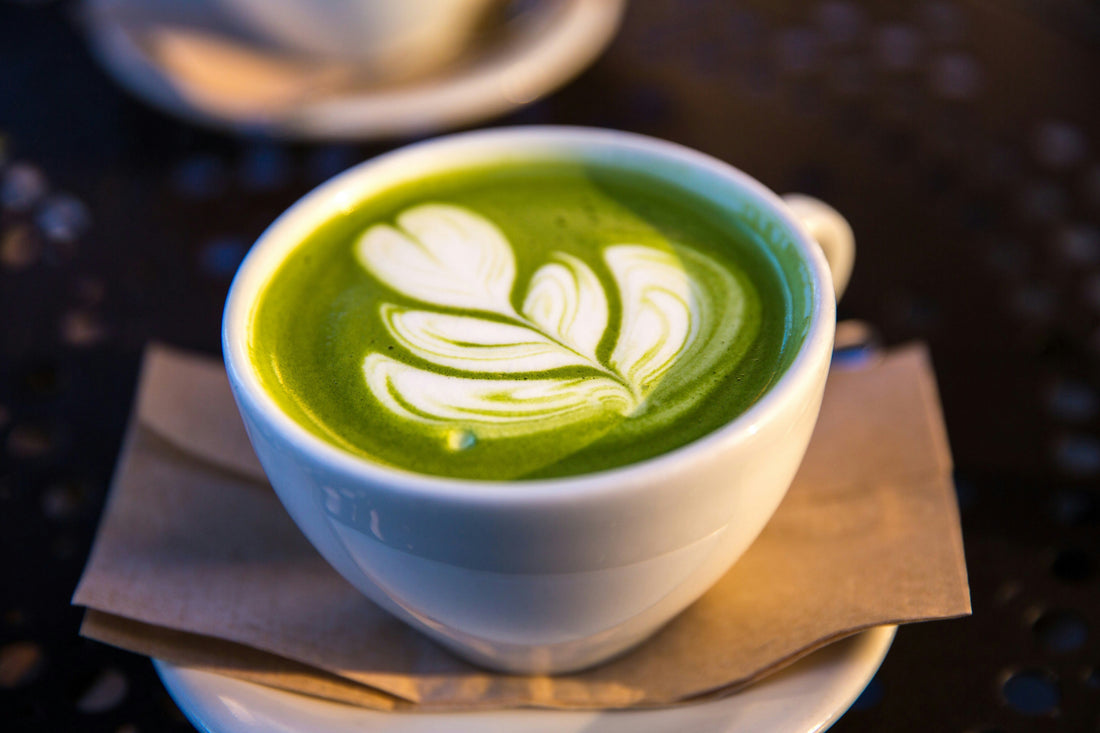
What is Ceremonial Matcha? Benefits, Quality & How to Choose the Right Powder
Carolina RettigShare
Ceremonial matcha is not just another green drink - it’s a ritual that combines tradition, quality, and a unique taste experience. From the finest tea leaves to a perfectly whisked bowl, it carries a rich Japanese heritage while giving your body a nourishing boost.
In this post, we’ll guide you through what ceremonial matcha really is, how it differs from other grades of matcha, and why it’s worth investing in the highest quality.
What Does “Ceremonial Matcha” Mean?
Ceremonial matcha refers to the highest grade of matcha powder, made specifically to be enjoyed with water – just as it is. Traditionally used in Japanese tea ceremonies, it’s produced from the first, most tender leaves picked in early spring.
The result? A silky, naturally sweet powder with a vibrant green color, packed with antioxidants and umami flavor.
Unlike culinary matcha, which is best for baking or smoothies, ceremonial matcha is crafted for pure drinking – a refined and authentic experience.
How is Ceremonial Matcha Produced?
The making of ceremonial matcha is a precise, time-honored craft. To achieve the highest quality:
Shade-growing: The youngest tea leaves are shaded for about three weeks before harvest. This boosts chlorophyll production and enhances L-theanine, giving the tea its balanced umami flavor.
Harvesting: Only the finest, first-flush leaves are handpicked.
Steaming & drying: The leaves are steamed to preserve nutrients and color, then dried and carefully de-stemmed.
Stone-grinding: The remaining leaf, called tencha, is slowly ground in traditional granite mills into an ultra-fine, emerald-green powder.
This delicate process, combined with the use of first-harvest leaves, is what sets ceremonial grade apart. The result is a smooth, sweet, nutrient-rich tea with both culture and craftsmanship in every sip.
Why Choose Ceremonial Matcha?
Ceremonial matcha is the ultimate choice if you want the best taste, health benefits, and overall matcha experience. It offers a more vibrant green color, a smoother, sweeter, and more complex flavor profile, higher levels of EGCG and L-theanine than lower grades. It’s ideal for daily matcha drinkers seeking an authentic, high-quality ritual.
How to Tell if It’s True Ceremonial Matcha
To spot genuine ceremonial matcha, look for these signs:
Color: A rich, emerald green - never dull yellow or brownish-green.
Aroma: Fresh, sweet, and slightly grassy - proof that young leaves were carefully processed.
Texture: Ultra-fine and silky, almost like baby powder.
Taste: Smooth, round, and naturally sweet with umami - not bitter.
Unfortunately, some cheaper powders are marketed as “ceremonial” without meeting the standard. At Zenzi Matcha, we only work with carefully selected producers in Japan who guarantee authentic ceremonial grade matcha, made according to tradition.
Health Benefits of Ceremonial Matcha
Ceremonial matcha is loaded with nutrients and bioactive compounds, especially EGCG (epigallocatechin gallate) - a powerful antioxidant linked to: Improved cardiovascular health, enhanced fat metabolism and stronger immune support. Thanks to its unique blend of caffeine and L-theanine, matcha also improves focus, mental clarity, and stress management without the crash of coffee. Research shows that regular matcha consumption may support balanced energy, reduce stress, and promote overall wellbeing making it more than just a drink, but a lifestyle upgrade (health benefits of matcha).
How Does Ceremonial Matcha Taste?
Ceremonial matcha has a distinct flavor that sets it apart: smooth, slightly sweet, full-bodied, and rich in umami. Unlike lower-grade matcha, it doesn’t carry a strong bitterness.
The balance of gentle sweetness with a subtle grassy freshness is what makes ceremonial matcha such a unique and enjoyable experience. When whisked properly, it also creates a velvety, frothy texture that elevates the ritual.
Is Ceremonial Matcha Worth It?
The short answer: yes, if you want an authentic matcha experience.
While ceremonial grade is more expensive than culinary matcha, you truly get what you pay for: better raw materials, traditional production methods, and a clean, refined taste. It’s the perfect choice for those who want to enjoy matcha daily, as a ritual for both flavor and wellbeing.
Think of it as an investment in your health and your moments of calm.
Final Tips
Want to prepare matcha at home and get that perfect frothy cup? Check out our step-by-step guide: How to Make Matcha – A Beginner’s Guide.
For more inspiration, recipes, comparisons, and deep dives into the world of matcha, explore the Zenzi Matcha Blog.
💌 Got more questions? Reach out - we’d love to help!
